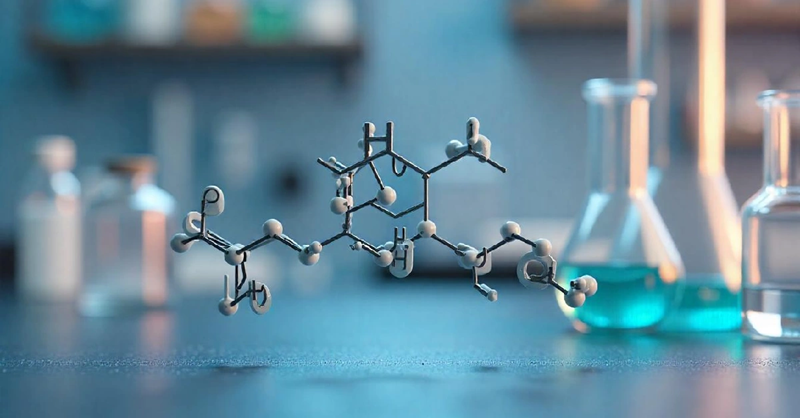Chemistry is a world of intricate structures, fascinating reactions, and meaningful applications that shape industries, science, and everyday life. Among the many compounds studied in organic and inorganic chemistry, formic acid (HCOOH) stands out as the simplest carboxylic acid, known for its sharp odor, acidic properties, and diverse uses. When combined with molecules like CH₂ (methylene unit) and H₂O (water), the chemical interactions open up even more interesting perspectives in terms of structure, reactivity, and practical implications.
This article explores HCOOH CH₂ H₂O, diving into their structural characteristics, physical and chemical properties, as well as industrial and scientific applications. By understanding how these components behave individually and in combination, we can appreciate their significance in fields such as organic synthesis, material science, and environmental chemistry.
1. Breaking Down the Components
Before exploring the combination, it is important to understand each component in isolation.
a) HCOOH (Formic Acid)
- Molecular formula: HCOOH
- Systematic name: Methanoic acid
- Structure: A carboxylic acid with a single carbon atom. Its structure consists of a carbon atom double-bonded to oxygen (C=O), bonded to a hydroxyl group (–OH), and a hydrogen atom.
- Key characteristics:
- Colorless liquid with a pungent odor.
- Strong hydrogen-bond donor due to its hydroxyl and carbonyl groups.
- Weak acid compared to mineral acids, but stronger than acetic acid.
Formic acid naturally occurs in ant venom (hence its name derived from formica, Latin for “ant”). Industrially, it is synthesized through methods like carbon monoxide hydrolysis.
b) CH₂ (Methylene Group)
- Formula: CH₂
- Nature: A reactive unit often encountered as a substituent group in organic chemistry.
- Exists in two forms:
- Carbene (CH₂:), a divalent carbon species with two non-bonded electrons, extremely reactive.
- Methylene group (–CH₂–), as part of larger organic molecules.
The methylene group plays a crucial role in polymer chemistry, hydrocarbon chains, and in organic reactions like cycloadditions.
c) H₂O (Water)
- Formula: H₂O
- Structure: Two hydrogen atoms covalently bonded to one oxygen atom, with a bent molecular geometry.
- Key features:
- Polar molecule with strong hydrogen bonding capability.
- Universal solvent, facilitating chemical reactions.
- Plays a role in acid-base equilibria, solubility, and stability of organic and inorganic compounds.
2. Structure of HCOOH CH₂ H₂O
When we consider HCOOH CH₂ H₂O, it refers not to a single rigid compound but to a system or mixture involving formic acid, methylene units, and water. There are several structural contexts to consider:
- Hydrated Formic Acid – HCOOH interacts with water to form strong hydrogen-bonded networks. This affects acidity, solubility, and reactivity.
- Formaldehyde Derivatives (CH₂O) – In many cases, CH₂ in chemistry discussions is closely related to formaldehyde (CH₂O) or its hydrated forms. In aqueous medium, formaldehyde exists as methylene glycol (CH₂(OH)₂), which can interact with formic acid.
- Complex Reactions – In organic synthesis, combinations of HCOOH, CH₂, and H₂O can yield intermediates that play a role in polymerization, cross-linking, or reduction reactions.
Thus, HCOOH CH₂ H₂O can be understood as a system involving hydrated formic acid and methylene intermediates in aqueous media, leading to unique structural and chemical outcomes.
3. Properties
a) Physical Properties
- Formic Acid: Boiling point ~100.8 °C, miscible with water, strong hydrogen bonding.
- Methylene Units: Unstable as free carbene, but stable within organic frameworks.
- Water: High dielectric constant, stabilizes ions and polar intermediates.
When combined, the mixture exhibits enhanced solubility of organic intermediates, stabilized transition states, and increased potential for acid-catalyzed reactions.
b) Chemical Properties
- Acidity: Formic acid donates protons easily in aqueous solutions, lowering pH.
- Redox Activity: HCOOH can act as a reducing agent, especially in catalytic hydrogenation.
- Reactivity of CH₂: Highly reactive methylene intermediates undergo addition or insertion reactions.
- Hydration: Water stabilizes charged species, shifts equilibrium in favor of hydrated intermediates.
The interplay of these properties makes HCOOH CH₂ H₂O valuable in both synthetic organic chemistry and industrial applications.
4. Applications
a) Organic Synthesis
- C1 Building Block: Formic acid provides a single-carbon unit in reactions, useful for carbonylation and alkylation processes.
- Reduction Reactions: In the presence of catalysts, HCOOH can release hydrogen, aiding in hydrogenation.
- CH₂ Intermediates: Facilitate the synthesis of formaldehyde derivatives, plastics, and resins.
- Hydrated Medium: Water ensures control over reaction kinetics and stability.
For example, formic acid and formaldehyde in water are used to produce resins like urea-formaldehyde and phenol-formaldehyde, which are essential in adhesives and coatings.
b) Industrial Applications
- Leather and Textile Processing – Formic acid helps in tanning and dye fixation, while aqueous systems improve efficiency.
- Preservation and Antimicrobial Uses – Diluted formic acid is used in animal feed preservation, where water aids in even distribution.
- Polymer Industry – CH₂-derived units form the backbone of plastics and synthetic fibers.
c) Environmental Chemistry
- Formic acid naturally occurs in atmospheric chemistry, contributing to rainwater acidity.
- CH₂ intermediates are key in understanding photochemical smog and formaldehyde pollution.
- Water serves as the medium through which these species interact in nature.
d) Energy and Fuel Research
- Formic acid is studied as a hydrogen storage material because it decomposes into CO₂ and H₂ under mild conditions.
- In aqueous solutions, this process is controlled and catalytically enhanced.
- CH₂ species play roles in methanol and hydrocarbon synthesis, which are critical for renewable fuel research.
e) Medical and Biological Aspects
- Small amounts of formic acid are metabolized in organisms but can become toxic at higher concentrations.
- Formaldehyde (CH₂O), closely related to the CH₂ group, is widely used in tissue preservation and sterilization.
- Water ensures the safe handling and dilution of these substances in biomedical applications.
5. Challenges and Considerations
While the HCOOH CH₂ H₂O system is valuable, there are concerns:
- Toxicity: Formic acid and formaldehyde can be harmful if not handled properly.
- Environmental Impact: Release of formaldehyde-related species contributes to air pollution.
- Stability: CH₂ intermediates are highly reactive, requiring controlled conditions to harness effectively.
Thus, safe handling, regulatory compliance, and sustainable production methods are crucial.
6. Future Perspectives
The intersection of formic acid, methylene chemistry, and water systems holds promising potential for innovation:
- Green Chemistry: Using aqueous formic acid systems for cleaner synthesis of fuels and chemicals.
- Renewable Energy: Expanding formic acid’s role in hydrogen storage and CO₂ recycling.
- Advanced Materials: Development of new polymers and resins with enhanced biodegradability.
- Medical Innovations: Safer derivatives for sterilization, drug synthesis, and bio-compatible materials.
As researchers continue to refine catalytic systems and understand the interactions at the molecular level, HCOOH CH₂ H₂O chemistry will remain a cornerstone in both applied and theoretical chemistry.
Conclusion
The combination of HCOOH (formic acid), CH₂ (methylene units), and H₂O (water) represents a fascinating triad in chemistry. Each component contributes unique structural and chemical properties, and together, they play vital roles in organic synthesis, industrial production, environmental chemistry, and energy research.
From being a naturally occurring acid in ants, to a hydrogen source for clean energy, to a building block for resins and polymers, the system exemplifies how simple molecules can lead to complex and impactful applications. Understanding HCOOH CH₂ H₂O is not just about recognizing a formula—it is about appreciating the interconnectedness of chemistry and its real-world importance.



